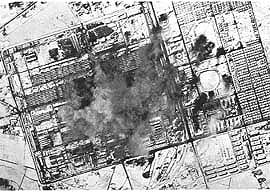|
Besides the Type 97 fighter, the Type 97 carrier attacker was approved and adopted by the Navy in 1937. It was one of the world best plane as the first single engine Navy plane with retractable landing gear. The Type 97 carrier attacker was engineered under the direction of Chief Engineer, Katsuji Nakamura. The three seater had an all-metal monocoque body construction, hydraulic retractable main landing gears, Fowler flaps, and hydro/manual folding main wings. There were two types; the first version with a "Hikari(light)" engine and a later version with a "Sakae" engine. These planes became famous in the attack on Pearl Harbor, and a total of 1,250 units were produced. Japanese aircraft industries attained the world level in this kind of aircrafts.  Type 97 Carrier Attacker Type 97 Carrier AttackerUnder an exclusive nomination by the Army, a development of the famous Type 1 fighter, the "Hayabusa (falcon)" (Ki-43) was started as the successor of the outstanding Type 97 fighter. the "Hayabusa" was engineered to achieve both exceptional maneuverability and long range. It became the ace of the sky. The "Hayabusa" production reached 5,751 units and became the second largest mass-produced plane, next to the Zero-fighter. But from the beginning, the "Hayabusa" did not run smoothly. The engineering group was the same as the one for the Type 97 fighter (Tei Koyama as the chief, Ota Minoru and Hideo Itokawa as the Engineers), but they were not very enthusiastic due to a medley of contradictions in the requirement. The first prototype was made in 1938 utilized 1,000PS class engine, and new mechanisms such as retractable gears and a variable pitch propeller. But to prevent an increase in weight, the wing loading became too high and as a result its dog-fight performance was disappointing. But the "butterfly-type dog-fight flap" developed at that time for an air-defense fighter Ki-44 (later "Shoki") proved effective even on a plane with high wing loading. Together with this flap and an improved Ha-25 engine, the plane showed significant improvement in performance, and was quickly adopted. The "Hayabusa" not only boasted its nimble maneuverability and exceptional long range, but also had excellent neutral controllability and good serviceability. But there were several drawbacks; lack of rigidity of the main wing, trouble in the main landing gears, and problems mounting heavy machine guns on the wing due to its three-beam wing construction. Also, fighting strategy was shifting from using light-weight fighters to heavy fighters, and its lack of diving speed and poor high-altitude performance became its weakest points. 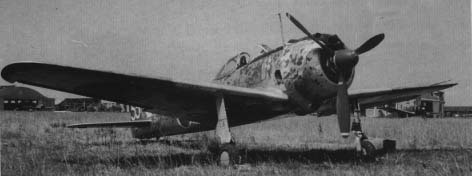 The Army Type 1 Fighter,
"Hayabusa (falcon)" The Army Type 1 Fighter,
"Hayabusa (falcon)"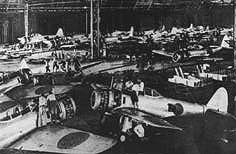 At almost the same time as "Hayabusa", the Type 2 heavy fighter, the "Shoki (Japanese defense God)" was being developed. Since a large Ha-41 engine for a bomber was used, the plane had a unique big-head style. It tended to be avoided by pilots due to its poor visibility when landing, but it had good speed and received support from experienced pilots. 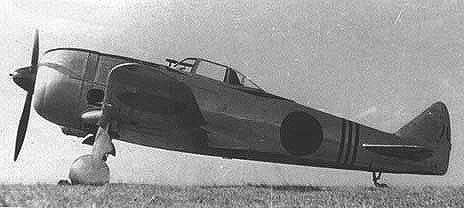 In 1941, the Army requested a plane that had maneuverability
superior to the Ki-43 "Hayabusa" and speed and climbing
power better than the Ki-44 "Shoki" be developed. It
required a top speed of 680km/h, a climbing time of 4.5 minutes
to 5,000m, and a range equal to that of the "Hayabusa".
This was a difficult demand to meet, even with the excellent
performance of the Ha-45 engine "Homare". Nakajima's
engineering team (the "Fighter's Kingdom" that had
developed the Type 97 fighter "Hayabusa" and the "Shoki")
took on this challenge by combining its all of its manpower.
The Chief Engineer was Tei Koyama, and the team included Engineer
Setsuo Nishimura, Masaru Iino, and Yoshio Kondo who was dispatched
from the Army Aircraft Technology Institute. Nakajima called
this Ki-84 the fastest fighter in the world, and completed the
first prototype in March 1943. At the test flight it reached
a maximum speed of 624km/h, but the type approval was delayed
due to engine troubles, and finally adopted as the Type 4 fighter
"Hayate (gale, swift wind)" and entered into priority
mass production. Production totaled 3,499 units, third following
the Zero and the "Hayabusa". 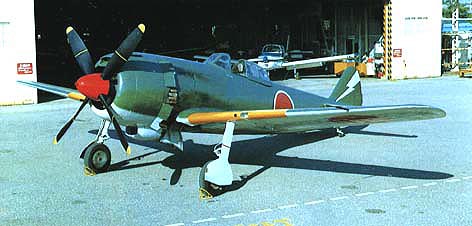 The picture above shows the plane preserved in the US (The picture was taken in front of the manufacturing factory, the former Nakajima Aircraft Utsunomiya Factory) 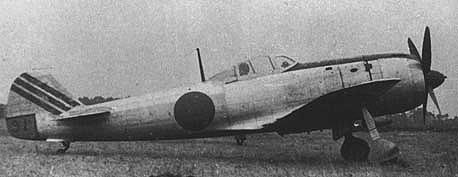 The Army Type 4 Fighter, "Hayate
(gale)" The Army Type 4 Fighter, "Hayate
(gale)"Due to the ever-expanding production demand by the Army and Navy, Nakajima Aircraft opened new factories one after another from 1942 to 1944. Many plants were built rapidly such as; the Handa Factory in Aichi Prefecture for the Army planes "Tenzan" and "Saiun", the Omiya Factory in Saitama Pref. for producing single engine planes for the Navy, the Utsunomiya Factory in Tochigi Pref. for "Hayate" planes for the Army, the Hamamatsu Factory in Shizuoka Pref. for engines for the Army, and the Mishima Factory in Shizuoka Pref. for accessories production. Also, construction on an under the ground plant was started in Shiroyama in Tochigi Pref. and the Kurosawajiri Factory in Kitagami City in Iwate Pref. for evacuation purposes, but they were not finished by the end of the war and had no practical use. Although Nakajima was the "Kingdom" of a single-engine planes (mainly fighters), they also worked on multi-engine planes as well. One of them was the approved twin-engine heavy bomber "Donryu (the name of a Buddhism priest)", which evolved into four-engine planes, the "Sinzan (deep mountains)" and the "Renzan (range of mountains)". These were developed upon the Navy demand, but not completed due to the condition of the war.  The Army Type 100 Heavy Bomber,
"Donryu(a Buddhism priest)" The Army Type 100 Heavy Bomber,
"Donryu(a Buddhism priest)"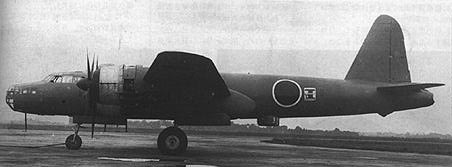 The Navy Type 18 Land Attacker, "Renzan (range
of mountains)" The Navy Type 18 Land Attacker, "Renzan (range
of mountains)"In 1943, at the early stage of the war, Japan was optimistic due to its early success, but Mr. Nakajima worried about the enormous difference in industrial power and natural resources between Japan and the US. He also noted the trend in the airforce strategy of the US with his keen intelligence. He judged, from the development status of the B-29 and B36 at that time, that Japan would be attacked by the B-29 in the fall of 1944. To counter this situation, Mr. Nakajima completed a large
thesis entitled, "Strategy for Victory" in August 1943,
proposing ways to change the current strategy and to retrieve
the superiority in the war. He made 50 copies of the thesis,
in confidence, and approached politicians and bureaucrats. The
backbone of the strategy relied on an ultra-heavy bomber; the
"Fugaku (Mount Fuji)". Prior to the disclosure of the
strategy, in early 1943, all Nakajima's executives were called
in and the concept of a new six-engine ultra-heavy bomber (Z-plane)
was explained. An "Air-defense Research Workshop" was
then started to promote the program. 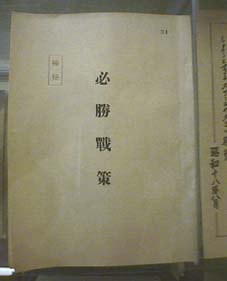 Å@ Å@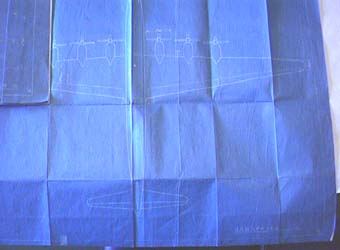 Å@ Å@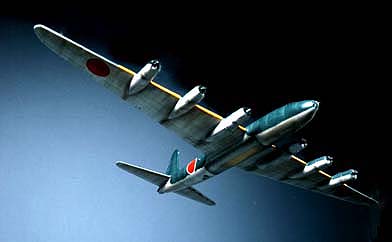 In 1945, as air attacks on mainland Japan became intensified, the Government decided to nationalize aircraft manufacturers, such as Nakajima Aircraft, in order to continue production. In April, Nakajima was designated as the First Military Arsenal, and all of its 250,000 employees, including commandeered workers, students, and volunteer lady corps, were moved under the control of the military.
Snow-covered Koizumi Factory bursting into flames by air attacks (photographed by the US military) Each plant was exposed to the thorough air attacks by B-29s, and production capability was being wiped out. In August of that year, all airplane manufacturing was banned at the end of the war. Nakajima Aircraft, which worked almost exclusively for the military, was ordered to be dissolved. Nakajima Aircraft was always watching the world, fostering
young engineers, operating schools for youth at each of its factories.
It also adopted fringe benefit programs such as sports clubs,
which are still applicable even today. The curtain came down on the eventful history of Nakajima Aircraft, less than 30 years since the Aircraft Institute began its voyage at a sericultural hut at Ota, Gunma Prefecture. It produced a total of 25,935 airplane bodies and 46,726 airplane engines. Nakajima Aircraft's total production in 30 years, in comparison with other manufacturers. After the war, Nakajima Aircraft was dissolved by order of GHQ into more than 15 companies. Each factory began making products utilizing the air craft technology, such as monocoque busses, or scooters using bomber tail wheels. But five of the companies joined forces together again under the slogan "Aircraft again!" and merged into one company, currently known as Fuji Heavy Industries, Ltd (SUBARU). It would be most appreciated if you would take a few moments to send us your comments and impressions by filing out the questionnaire. |
